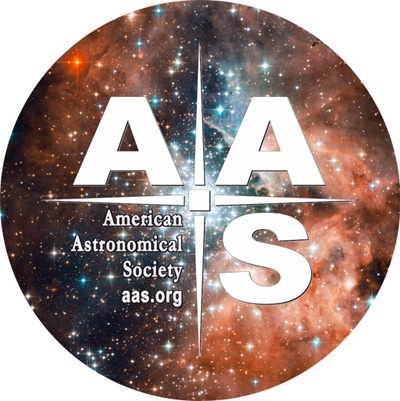27 May 2020
Susanna Kohler

Artist’s illustration of the possible disintegrating planet in the nearby planetary system DMPP-1. [Mark A. Garlick/Haswell/ Barnes/Staab/Open University]
Among the wealth of exoplanets we’ve discovered beyond our solar system, some are temperate, some less so. New observations have now revealed what may be a particularly inhospitable environment: a planet literally disintegrating as it orbits its host.

Artist’s illustration of another DMPP-discovered planetary system, DMPP-2. [Mark A. Garlick/Haswell/ Barnes/Staab/Open University]
Peering Through the Shroud
With initial observations in 2015, the Dispersed Matter Planet Project (DMPP) promised an innovative approach to hunting for exoplanets closely orbiting their hosts. Using high-cadence, high-precision radial velocity measurements, the project targets bright nearby stars that shows signatures of being shrouded in hot circumstellar gas. By looking for tiny radial-velocity wiggles in the star’s signal, the DMPP team hopes to detect small planets that are losing mass as they orbit close to their hot hosts.

In December 2019, DMPP announced its first discoveries: six planets orbiting around three different target stars. Now, in a new publication led by scientist Mark Jones (The Open University, UK), the team has revisited the first of these systems, DMPP-1, with follow-up photometry from the Transiting Exoplanet Survey Satellite (TESS).

Intriguingly, the radial-velocity-detected planets are not the only signals from this system.
Missing the Expected, but Finding the Unexpected
DMPP-1 is a 2-billion-year-old star located just over 200 light-years away. The radial-velocity observations of this system revealed the gravitational tugs of four planets all orbiting with periods of less than 19 days. The radial-velocity data suggest that this system is probably near edge-on and contains three super-Earths and one Neptune-like planet.
Jones and collaborators began their photometric follow-up by searching TESS data for evidence of these four planets transiting across the host star’s face. Interestingly, they found no sign of transits at the predicted periods — indicating that the four radial-velocity planets are either smaller than expected, or that the system isn’t quite edge-on after all, so the planets don’t pass directly in front of the star.
The authors did, however, find a new signal: a weak transit detection with a period of just ~3.3 days. This signal doesn’t match any of the known radial-velocity planets.
A Disappearing Planet?
What might this marginal detection be? Its variable transit depths, short period, and apparent small size are all consistent with a catastrophically disintegrating exoplanet — a close-in, small, rocky planet that is so irradiated by its host that its rocky surface is being sublimated. As time goes on, such a planet will eventually disintegrate into nothing.
This transit signal still needs to be confirmed with additional follow-up photometric observations. Assuming it proves to be a true detection, however, such a disintegrating, rocky planet orbiting a bright nearby star would provide a veritable gold mine of information.
By exploring the transit signals from DMPP-1 with future technology like the James Webb Space Telescope, we will be able to examine the composition of the ablated material, potentially revealing clues as to how hot, rocky inner planets form and evolve.
Citation
“A Possible Transit of a Disintegrating Exoplanet in the Nearby Multiplanet System DMPP-1,” Mark H. Jones et al 2020 ApJL 895 L17.
https://iopscience.iop.org/article/10.3847/2041-8213/ab8f2b
See the full article here .

five-ways-keep-your-child-safe-school-shootings
Please help promote STEM in your local schools.

AAS Mission and Vision Statement
The mission of the American Astronomical Society is to enhance and share humanity’s scientific understanding of the Universe.
The Society, through its publications, disseminates and archives the results of astronomical research. The Society also communicates and explains our understanding of the universe to the public.
The Society facilitates and strengthens the interactions among members through professional meetings and other means. The Society supports member divisions representing specialized research and astronomical interests.
The Society represents the goals of its community of members to the nation and the world. The Society also works with other scientific and educational societies to promote the advancement of science.
The Society, through its members, trains, mentors and supports the next generation of astronomers. The Society supports and promotes increased participation of historically underrepresented groups in astronomy.
The Society assists its members to develop their skills in the fields of education and public outreach at all levels. The Society promotes broad interest in astronomy, which enhances science literacy and leads many to careers in science and engineering.
Adopted June 7, 2009
